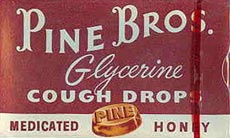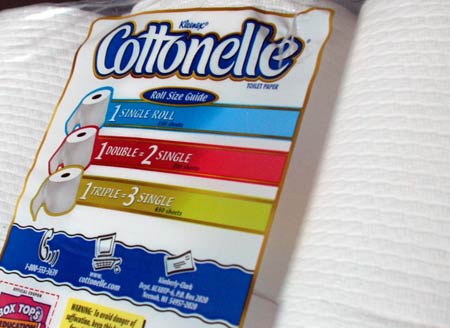A Low-Fi Solution to E-Mail Overload: Sentenc.es
I’ve written about e-mail overload issues in the past, and today I’m presenting what I believe is a simple, low-fi solution: sentenc.es.
In a nutshell, I have two issues with e-mail:
- More than any other medium in the world, the time commitment difference between sender and receiver is huge. For instance, if you call me on the phone and we chat for 10 minutes, that’s 10 minutes of your time and 10 minutes of my time. If you write me a handwritten letter and I write you one back, that’s maybe 30 minutes of your time and 30 minutes of my time. If we exchange text messages, that’s 10 seconds from you and 10 seconds from me. But with email, often times the sender will ask two or three open-ended one sentence questions which elicit multi-paragraph answers. In these cases, the sender spends one minute and the receiver is asked, implicitly, to spend maybe an hour.
- When faced with an inbox of 100-400 messages, I usually find myself replying to the messages which are quickest to reply to, rather than which are most important to reply to. The end result is a continual paring down of my inbox until I have 50 really important messages to reply to which are then too old to take care of.
In thinking about how to reduce this problem for me personally, I came up with a technology solution which, while cool, would require way too much buy-in from OS makers, mail application providers, and individuals. Essentially, whenever you send me an e-mail, I’d like to be able to instantly pop up a Toast or Growl message on your desktop for a few seconds with a status message of my choice. Something like “Current response time estimate: 7 days” or something more personable. I don’t like auto-responder e-mails because I’m not trying to clog up your inbox, but the ability to send you a quick, fleeting status message would be excellent. Perhaps even when you just hover over my name in the To: field before you even send the mail.
Annnnnnnyways… that solution is a bit too hi-fi and it doesn’t really solve the core problem, so instead I’m enacting a new policy today which seems potentially much more effective:
Every e-mail I send to anyone, regardless of subject or recipient, will be five sentences or less. Like a cinquain. Ideally, it would be a 160 character count like an SMS message, but since that would require an actual e-mail plug-in (viz. “work”), we’ll go with the much-easier-to-count concept of sentences instead.
In order to politely explain the systematic brevity with a similar amount of brevity, I will link to a new site I just set up called five.sentenc.es in my signature line. By ensuring that all e-mails I send out take the same amount of time to send (viz. “not a lot”), I am evening the playing field between emails and attending to many more of them in the end.
Read more…
Got iPhone? Get Leaflets…
 The good fellas’ at Blue Flavor are announcing this morning the release of “Leaflets” — mini browser-based apps for your shiny new iPhone. Available flavors currently include Flickr, Del.icio.us, Upcoming, The New York Times, Newsvine, and a few others.
The good fellas’ at Blue Flavor are announcing this morning the release of “Leaflets” — mini browser-based apps for your shiny new iPhone. Available flavors currently include Flickr, Del.icio.us, Upcoming, The New York Times, Newsvine, and a few others.
The cool thing about Leaflets is that they display data from the services listed above in a format tailor made for the iPhone. Apple has made a big deal about how the iPhone can view “the real web” and not “the mobile web”, but while this is true, it still doesn’t mean “the real web” is an ideal format for the iPhone. The mobile savants at Blue Flavor have taken this axiom to heart and created a nice middleware layer which lets me get more out of my Newsvine, my Flickr, and my Del.icio.us by getting less.
Check out iPhone Leaflets at GetLeaflets.com.
Letting go of the Trumpets: A Week with the iPhone

In discussing the iPhone with Dan Benjamin a couple of days ago, at one point I mentioned it was “like someone assembled the finest orchestra the world, but decided to leave out the trumpets”.
Given such an orchestra, one can come away with either of the following reactions:
a) “Wow, what an absolutely fantastic orchestra.”
b) “Uhhh, where are the trumpets?”
With apologies to trumpet players around the world, I find myself decidedly in camp A — sometimes appreciative of what Apple has left out of the iPhone and sometimes frustrated by it, but never losing sight of what a great device this is and what it will become in the months to follow.
A lot has been said already about the jesusphone so who knows how much of this article will be interesting, but it’s a cathartic post for me, having waited several years for this device to become a reality. I first wrote about the iPhone almost exactly three years ago at a time when most of the world thought Apple would never get into the phone business. It’s interesting to see how opinions have changed since then from “why would they ever” to “why would they ever NOT” get into this market.
Read more…
Announcing ElectionVine: Distributed Presidential Elections
This morning on Newsvine, on Mike Industries, and on thousands of blogs across the world, we launched ElectionVine.
ElectionVine is a giant distributed polling system designed to gauge the momentum of the U.S. Presidential race through the eyes of the independent internet and blogosphere. While traditional polling methods are carried out by single organizations, ElectionVine is entirely in the hands of site owners like you.
Here’s how it works:
- Head to electionvine.com and get your personalized poll code. You can customize what your poll will look like so it fits the colors of your site and even personally endorse a candidate if you’d like.
- Place your poll code in the sidebar of your site or blog and watch the votes come in.
- Check your own site’s political breakdown right from within the poll itself or on the ElectionVine Leaderboard.
Cumulative vote totals on the ElectionVine leaderboard will continue to rise up until the presidential primaries, but users’ votes will reset every month, allowing you to essentially see an entirely new set of data every 30 days.
The coolest part of ElectionVine, however, is that once you’ve voted on one site (say, Techcrunch), your vote will automatically count on any other sites you happen to visit thereafter (say, Mike Industries).
The dream of ElectionVine is to collect the most distributed view of how the election is shaping up online, and for that, I ask the assistance of you, faithful Mike Industries reader. We’ve provided two quick, unobtrusive methods of embedding, via a standard embed tag and via the newly developed WEDJE javascript method.
So head on over to ElectionVine and set up your polling place today. The country and The Vine thank you!
How To Keep Widgets From Slowing Down Sites: WEDJE
The whole world is going to widgets. This overused, overhyped term refers to third-party code one places on their website or blog in order to display such things as Flickr photos, Twitter status, or iTunes playlists. Everybody and their mom is putting out widgets these days, and although only about 1% of them are useful or interesting, they are an important new distribution mechanism that is changing the way companies think about syndication.
But there is a big problem with widgets: they slow down the sites that use them. In the best case, you have a company like Flickr whose servers are almost always snappy, and in the worst case, you have a young startup that is constantly struggling against increasing demand and occasionally can’t serve up any code at all.
The problem is that in either of these cases, the completion of your site’s loading and rendering depends on someone else’s code living on someone else’s server. Including a fast and reliable Flickr widget still slows your site down by at least a split second and including a less stable one can leave your site hanging indefinitely.
We’ve been developing what we think is going to be a gangbusters widget at Newsvine over the last few months but just as we were getting ready to deploy it, Intern Rob and I hacked together what we think is a method of deploying widgets in such a fashion that they don’t affect the load times of their parent sites whatsoever.
Following is a breakdown:
Read more…
Is It Okay To Eat 50 Year Old Cough Drops?
 So after my post about the disappearance of Pine Bros. cough drops, Freckles discovered there was an eBay auction offering up one unopened box of the honey-flavored variety. The rub being that they were from a production run in the 1950s.
So after my post about the disappearance of Pine Bros. cough drops, Freckles discovered there was an eBay auction offering up one unopened box of the honey-flavored variety. The rub being that they were from a production run in the 1950s.
I placed a bid of $6, won the auction, and my 50-year-old box of cough drops is now en route. So the question is: what is the shelf life on an item like this and are they safe to eat? If yes, I will eat them. If no, I will just keep them as memorabilia.
Any scientists out there in the audience? What happens to honey and glycerin over the course of 50 years? I have actually heard that honey is the only food in the world that never spoils.
The Most Useless Infographic Ever
The purpose of infographics is to take data that is initially tough to interpret and distill it into some high-level knowledge that readers can remember and take away with them. Upon picking up a six-pack of Cottonelle last night though, I think I found the most useless infographic ever:

Yes indeed. It’s a visual reminder that:
- 1 x 1 = 1
- 2 x 1 = 2
- 3 x 1 = 3
That’s good times. And there’s even a 1-800 number you can call for further details as well as a website where perhaps you can plug in different values and see how many single rolls a quintuple roll would equal.
If I were the makers of Cottonelle, I’d probably use this space to showcase and romanticize the process by which they get Aloe into the toilet paper. I’ve always wondered about it.
For much better examples of infographics, check out a great book Rex showed me: Understanding USA.
Vote Your Conscience on Facebook
Our superstar new intern, Rob “Double Tall Non-Fat” Goodlatte, just whipped out a Newsvine election widget for use on Facebook. If you have a Facebook account and want to express an endorsement for the 2008 Election, head over to the page below… it only takes a second:
Newsvine Election ’08 Widget for Facebook
This is the first in a series of excellent election-related Newsvine features coming very shortly. Stay tuned.
TeamSnap is a Really, REALLY Nice Site
 Just a few hours ago, Matt Triplett and the fine folks at SparkPlug released a site called TeamSnap.
Just a few hours ago, Matt Triplett and the fine folks at SparkPlug released a site called TeamSnap.
It is quite simply the bees’ knees.
TeamSnap is an application built on Rails designed to help people manage their amateur sports teams online, and it’s one of the best executed pieces of communication design I’ve seen in awhile. Not only is the site beautiful but everything is exactly where it should be. Within seconds, you know exactly what you can do with TeamSnap and exactly where to click in order to get started.
There are just so many things the site gets right that it’s hard to know where to start:
- Feature set — Not only can you do the basics like publish a calendar of your team’s games, but you can even coordinate who’s bringing “refreshments”. For some reason, the team chose to make the beer icon blue which I don’t quite understand, but whatever. A lot of thought has gone into exactly what needs to be organized in sports leagues and these guys are clearly designing from experience.
- Tour — The walkthrough is easy to follow and the screenshots are crisp and illustrative.
- Testimonials — Everyone knows testimonials are often suspicious and overly pithy so TeamSnap created satirical ones instead.
- Beautiful iconography — Every icon exudes a cohesive, friendly tone that makes me want to click.
- RSS Feeds — You can follow all of the latest developments with your team not only via email, but also with your newsreader.
- Structured data — TeamSnap ships with support for 24 sports (including “Dragon Boat”) and one of its important capabilities is storing structured statistical data for each sport. This means, you’re not just uploading a Word Document with play-by-play in it. You’re actually entering stats for all players on your girlfriend’s beach volleyball team (and then hopefully explaining everything in personal sessions later). Hugely powerful.
I’ve always thought the most interesting social networks out there were not pure social networks but rather networks built around an existing subject matter. While TeamSnap may look on the outside like a beautifully executed organizational tool, it’s actually social software built around one of the most technologically dormant (and ripe) social constructs around: recreational sports.
I expect TeamSnap to do very, very well once it’s out of beta, and I give Matt and crew a huge thumbs up for designing an excellent product at an excellent time. I will also be hiring Sparkplug the next time I need something awesome designed.
Well done you!
Desperately Seeking Pine Bros.

How are these brothers still around? Punks.
Everyone knows cough drops are wolves in sheeps’ clothing. Pretending to cure you of your esophageal ills, these sugary lozenges usually do nothing more than stimulate your salivary glands into wetting your throat down until the next dose. The better they taste, the more you eat, and the less frequently you think about how crappy you actually feel.
When I was little, the undisputed taste leader in cough drops were Pine Bros (also known as “Pine Brothers”) chewy throat lozenges. Actually, back then, I don’t even think they were called “throat lozenges”… just “cough drops”. Short and sweet. They came in Honey flavor and Cherry flavor and had no medicinal value whatsoever. Just soft, chewy, long-lasting, and fabulous on the tastebuds. We ate them like candy. Awesome candy.
I forgot all about Pine Bros. cough drops for about 15 years between the late 80s and around 2002 when I unexpectedly found a reference to them on the internet and had to have them again. Through medichest.com, I was able to order several cases at very reasonable prices. The recipes had changed slightly and the lozenges were now being sold as “glycerine based zinc supplements” by a different company — with nary an actual Pine brother to be found — but they were still great. I ended up buying several more cases until the product suddenly disappeared off the face of the earth a couple of years ago.
Since that time, subsequent product searches have come up empty. There are even posts on eBay offering top dollar for any existing supply.
… which leads to my two questions:
- Does anyone know exactly what happened to these things and why?
- What is currently the most widely accepted substitute for Pine Bros. cough drops in the world today? I’ve recently gotten hip to Airborne Gummy Throat Lozenges which are pretty damned close to the real deal. The upside is that they taste every bit as good as the original, but the downsize is that they are a whopping $3 a pack and you have to pick out the nasty licorice ones from the otherwise great flavors of honey, orange, cherry, grape, and lime. I have also heard that Grether’s Pastilles and even Weight Watchers, believe it or not, are making decent substitutes for the originals. Anyone tried these?
